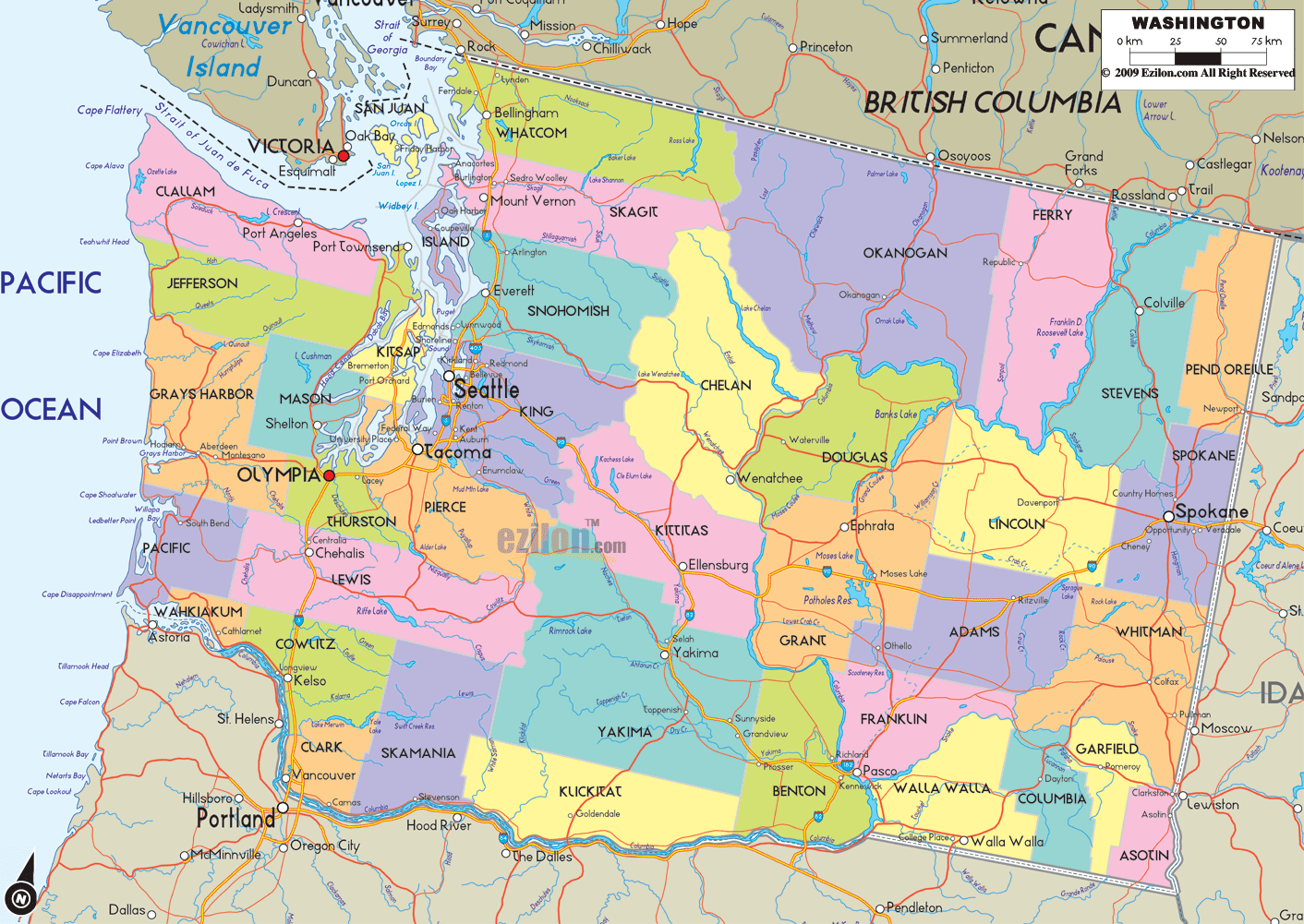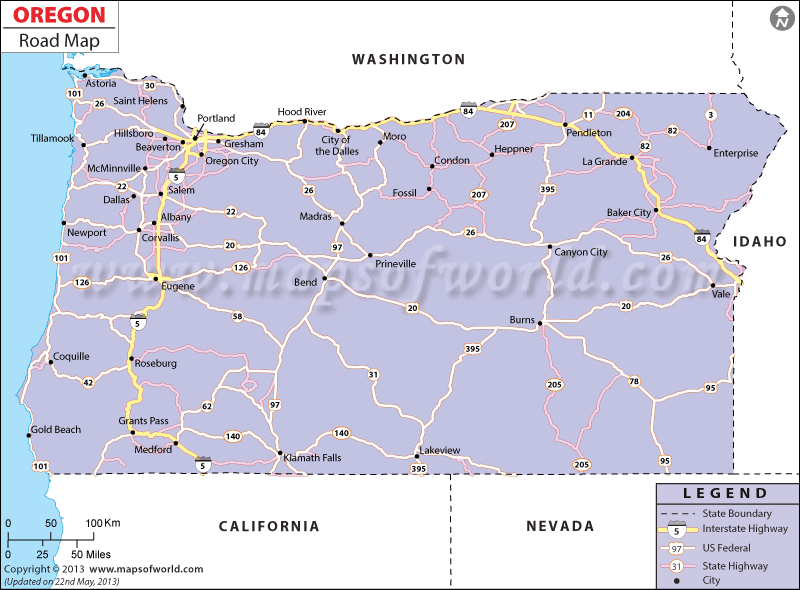Blue Highways: Clarkston, Washington
Unfolding the Map
 It's the last stop in Washington with William Least Heat-Moon (LHM), and we make it a doozy by pulling out our inner nerds and comparing legends of American exploration with fictional legends of galactic exploration. What do I mean? Read on, Littourati, read on. Oh, if you want to place Clarkston in an earthly context, warp on over to the map (yes, that's a hint about what to expect).
It's the last stop in Washington with William Least Heat-Moon (LHM), and we make it a doozy by pulling out our inner nerds and comparing legends of American exploration with fictional legends of galactic exploration. What do I mean? Read on, Littourati, read on. Oh, if you want to place Clarkston in an earthly context, warp on over to the map (yes, that's a hint about what to expect).
Book Quote
"At the east end of the Clearwater basin lay the twin towns of Clarkston, Washington and Lewiston, Idaho. Clarkston used to be Jawbone Flats until it became Vineland, then Concord (the grapes, you see); in 1900, the town took the present name to parallel Lewiston across the river. The historical pairing is nice, but give me Jawbone Flats...."
Blue Highways: Part 6, Chapter 10
 The Queen of the West steamboat docked at Clarkston, Washington. Photo by John Harrison at the Northwest Power and Conservation Council's website. Click on photo to go to host page.
The Queen of the West steamboat docked at Clarkston, Washington. Photo by John Harrison at the Northwest Power and Conservation Council's website. Click on photo to go to host page.
Clarkston, Washington
I've only started really looking into the Lewis and Clark expedition since they've been a big part of this chapter in Blue Highways. Other than knowing from history courses taken in high school that Lewis and Clark explored the large area of land then called Louisiana that was purchased from France by Thomas Jefferson for the United States, that it's purchase doubled the size of the United States with a stroke of a pen, and finally that the addition of the vast territory and its exploration gave impetus to the U.S. belief in manifest destiny, I didn't know much more about particulars of the expedition.
In fact, Lewis and Clark's expedition was one of three commissioned by Thomas Jefferson after the purchase to confirm the boundaries and explore the unknown interior of the new territory. The others were the Red River Expedition and the Pike Expedition. However, Lewis and Clark's probably became the most famous since they pushed all the way to the Pacific Ocean and not least because of the participation of Sacagewea, their female Native companion and guide, whose bravery and resourcefulness became an inspiration for 19th century women's rights movements.
When I think of the Lewis and Clark expedition, however, and try to think of parallels that would make their challenge and accomplishments more real to a modern audience, the only comparison that I can draw is (and I know you'll really think I'm a nerd for this, Littourati!) Star Trek.
I can hear you groaning now. Star Trek? Lewis and Clark? Really?
If you get past the initial fit of laughing and snorting, I am perfectly serious. Why? Because for all intents and purposes, Lewis and Clark set out on an expedition into an alien world. Nobody knew what, or who, was out there. Based on fossils that had been found in what was then U.S. territory, Thomas Jefferson even warned Lewis and Clark to be on the lookout for living specimens of mastodons and other living relics from the Pleistocene Age. They might as well have been taking a spaceship to some other planet - that's how unknown the new territory was.
Star Trek's theme goes something like this:
"Space, the final frontier. These are the voyages of the starship Enterprise. It's (five year - TOS) (continuing - TNG) mission: to seek out new life and new civilizations, to boldly go where (no man - TOS) (no one - TNG) has gone before."
Make a few substitutions of words, and you have the mission of the Corps of Discovery, the official name of the Lewis and Clark expedition. They headed out into what was then a huge, unknown (to Europeans) frontier. They were to seek out new life through collection of scientific specimens and through observation. They were to look for new civilizations and peoples in a world that could prove just as hostile and alien as any that Kirk and Spock encountered in their television galactic wanderings. Lewis and Clark, in many cases, literally went where no one had gone before.
Unlike the explorers in Star Trek, they didn't encounter anything of the extra-terrestrial variety. They did not see any mammoths or mastodons, since those species had been extinct in North America for nearly 10,000 years. Like the Star Trek crew, they did meet Native Americans. Yes, that's right. Kirk and crew in Star Trek find a planet where American Indians had been transported by an alien race called The Preservers. Lewis and Clark instead met Native Americans on the natives' own territory. Both Lewis and Clark were veterans who had fought with and against Indians in the East, so they had some familiarity with tribal cultures. However, as they went farther west each tribe they encountered had its own culture and customs, and Native culture was so unlike European culture that it really must have been like meeting an alien race where there are few commonalities other than a shared humanity. Sacagewea, a Shoshone woman married to a trapper who accompanied the expedition, turned out to be incredibly helpful to them as a guide and go-between. It is interesting in this particular chapter of Blue Highways that given the clashing of worlds that must have happened each time the expedition came in contact with natives, LHM writes that Lewis and Clark's conduct, especially toward the Nez Perce, was so well-conducted that the tribe didn't fight white settlers for 75 years following the expedition.
Unlike Star Trek, in which the Prime Directive is a major principle that guides and limits the crew of the Enterprise in how they deal with alien cultures, the Lewis and Clark expedition was under no such restrictions. In Star Trek, the Prime Directive mandates that Federation personnel cannot interfere in the internal development of alien civilizations, especially those less advanced. This serves as a way to create tension as the Enterprise crew determines how to best study and interact with less advanced civilizations. It also provides another element of tension in Star Trek plots if they accidentally contaminate, or try to undo the contamination, of alien races. There was no Prime Directive for Lewis and Clark, and they interacted often and frequently with native tribes. They could not help but make contact to gain vital supplies such as meat and salt. LHM relates a story, a clash of civilizations type story, where an Indian man, derisive of the expeditions reliance on dog meat, throws a malnourished puppy at Lewis. Lewis throws it back at him, and then grabs the native's tomahawk and lets him know in no uncertain terms that he will punish such insults in the future.
However, most of their encounters went relatively smoothly. Europeans were generally unknown in the area - this would change after the expedition. And like the Enterprise crew, which could use advanced technology to smooth its way and occasionally threaten the peoples they ran across, Lewis and Clark were able to use products of European civilization like matches, magnets and magnifying glasses to impress and mystify natives. Just as Star Trek had Dr. McCoy who often used advanced medicine to the advantage of the Enterprise crew, Lewis and Clark also used medical techniques to win over various native tribes. Though none of the expedition was formally trained in medicine, they knew enough about dressing wounds and draining lesions that they won the goodwill of many of the tribes they ran across.
Star Trek is also infamous for the "redshirts." These were Enterprise crew members, usually dressed in red uniforms, whose plot purpose appeared to be to die and thus demonstrate the terrible predicament facing the crew. The Enterprise seemed to have an unlimited supply of these redshirts, and it makes you wonder, given their fatality rate, why anyone who signed up for Starfleet would ever agree to wear that uniform. The Lewis and Clark expedition, by contrast, had remarkably good luck in potentially hostile territory. Only one soldier on the expedition died, possibly because of appendicitis. The only violent encounter, which occurred with a native tribe called the Piegan Blackfeet, was over the Piegans fearful interpretation of the Corps dealings with other tribes that would end their monopoly on guns and the balance of power with neighboring enemy tribes. As the Piegans tried to steal the Corps guns in the middle of the night, they were discovered, chased down and in the struggle two of the Piegans were killed. Other than that, the only other near fatality came when one of the Corps shot Lewis in the butt in a hunting accident. He recovered.
I hope I haven't gone too far out on a limb comparing the Lewis and Clark expedition with Star Trek, but there certainly are parallels that can be drawn, as well as significant differences. Both the fictional galaxy-exploring expedition and the actual American West exploring expedition had similar goals. In the end, Lewis and Clark accomplished so much that a greater understanding of the dangers and potential resources of the newly purchased territory was achieved, and the frontier was pushed farther back. Without them, a young United States might not have achieved its goal of a coast-to-coast unified (dare I say it?) federation. Unfortunately, it also led to the gradual end of traditional native life and the loss of their traditional lands. Lewis and Clark paved the way for a nation, but also began the inexorable destruction of traditional Native life as the explorers opened the frontier to the settlers.
Musical Interlude
What could be better, in a post that references Star Trek, than a video of a tune "sung" by Shatner himself. And Bohemian Rhapsody, no less! Enjoy!
If you want to know more about Clarkston
City of Clarkston
Clarkston.com
Hells Canyon Visitor Bureau
Wikipedia: Clarkston
Next up: Lewiston, Idaho




 Wednesday, November 23, 2011 at 8:03AM
Wednesday, November 23, 2011 at 8:03AM

